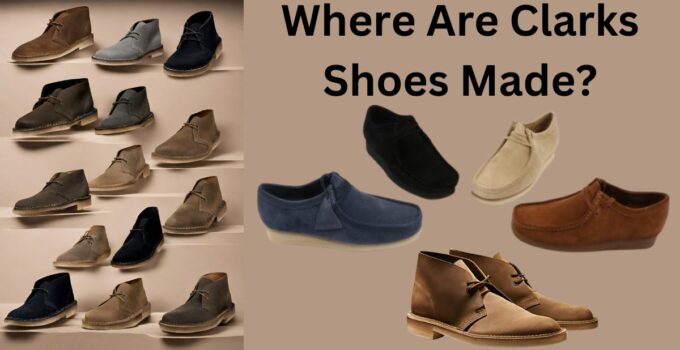Have you ever been wondering where your relaxed Clarks come from? Clarks, the shoe brand famous for its iconic Desert Boot, has been a family name for almost 200 years. However, with a global presence, one question often arises: Where are Clarks shoes made?
This guide dives into the fascinating world of Clark’s shoe production, exploring their manufacturing locations around the globe, from their historical origins to their current strategy. We will also answer some burning questions like where your favorite Clarks models are produced and the future of Clarks manufacturing. So, lace up and get ready to explore the world of Clarks!
A Brief History of Clarks Shoes: From Humble Beginnings to Global Icon
The Clark’s story starts in 1825 in the quaint English village of Street, Somerset. It all began with two brothers, Cyrus and James Clark, who were not initially in the shoemaking business. They were tanners and wool staplers, crafting rugs from sheepskins. However, James, ever the resourceful one, saw an opportunity in the leftover scraps. He started fashioning slippers from these rugged offcuts, giving birth to the very first Clarks shoe, the sheepskin slipper.
This simple yet ingenious creation was met with instant success locally and across the UK. The brothers, realizing the potential of their venture, soon expanded their operation. In 1830, they opened their first shoe shop on the high street, officially establishing Cyrus and James Clark.
Over the next century, Clarks continued to innovate and evolve. William Clark, James’ son, revolutionized production by introducing factory systems and modern machinery like the Singer sewing machine. This boosted efficiency and allowed them to expand their product line.
A pivotal moment arrived in 1883 with the launch of the Hygienic range. This marked the arena’s first shoe designed specially to comply with the foot’s shape. This idea continues to be the cornerstone of Clarks’ popularity for comfort and support.
Through the years, Clarks witnessed numerous milestones. They created the iconic Desert Boot in 1950, transcending its military origins to become a cultural phenomenon. They also remained committed to ethical practices, advocating for fair working conditions and responsible sourcing throughout their global expansion. Today, Clarks stands tall as a globally recognized brand, synonymous with comfort, innovation, and timeless style.
Where Are Clarks Shoes Made?
Clark operates a diverse manufacturing network, spreading its production across several countries. Here’s a closer look at their crucial production hubs:
Vietnam: Currently, Vietnam reigns supreme as Clarks’ primary manufacturing location, churning out a significant portion of its footwear. Their expertise and efficient operations make Vietnam a crucial player in Clarks’ global production strategy.
India: Playing a vital role in Clarks’ production landscape, India boasts factories dedicated to specific shoe types. Clarks can leverage India’s professional staff and doubtlessly cater to unique regional needs.
UK: After a 12-year hiatus, Clarks reintroduced manufacturing back to their roots within the UK in 2017. Their Somerset headquarters now houses a manufacturing facility devoted to the iconic Desert Boot, showcasing their commitment to balancing worldwide efficiency with history and neighborhood manufacturing.
Beyond the Big Three: Clarks also has manufacturing facilities in other countries, including China, Cambodia, Mexico, Bangladesh, and Indonesia. These locations contribute to their global production capacity, ensuring they can meet diverse demands and cater to a wider market.
It’s important to remember that the specific location of production for each Clarks shoe can vary depending on the model, current production demands, and even seasonal factors. While this guide provides a general overview, the best way to pinpoint where your specific pair of Clarks was made is to check the label or contact Clarks directly for specific details.
Clarks Shoe Manufacturing Over the Years
Clark’s manufacturing landscape has evolved throughout its history. Initially focused on UK production, they gradually expanded overseas in the late 20th century, seeking cost-effective solutions. However, the recent reintroduction of UK manufacturing demonstrates their commitment to balancing global efficiency with heritage and local production.
Quality Control and Ethical Manufacturing at Clarks
Clark prioritizes maintaining consistent quality standards across all its manufacturing locations. They have established robust quality control measures and adhere to ethical manufacturing practices, ensuring fair working conditions and responsible materials sourcing.
The Iconic Clarks Shoe Styles: Timeless Classics That Define the Brand
Clarks, synonymous with comfort and style, has built its recognition based on iconic shoe patterns that have stood the check of time. These undying classics transcend generations and tendencies, supplying wearers with a perfect combination of function and fashion. Let’s delve deeper into a number of the most recognizable Clarks patterns that have shaped the logo’s legacy:
1. The Clarks Desert Boot:
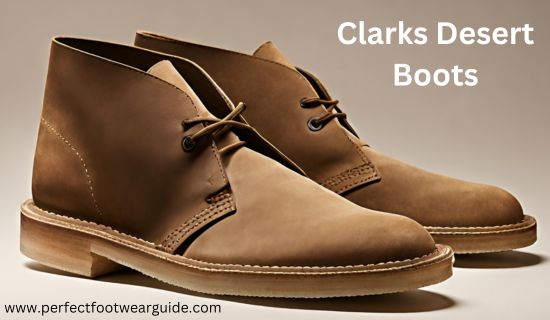
Origin Story: Launched in 1950, the Desert Boot emerged from the imaginative and prescient of Nathan Clark, who became inspired by the easy but realistic footwear worn in Egyptian bazaars.
Design and Features: This iconic chukka boot boasts a smooth silhouette made from splendid suede. Its minimal layout functions as an eyelet lace-up closure. It sits atop a crepe sole, renowned for its consolation and durability.
Cultural Impact: The Desert Boot fast won popularity, becoming a staple for squaddies and civilians during World War II. Its undying layout resonates with individuals seeking a versatile and elegant footwear option.
2. The Clarks Wallabee:
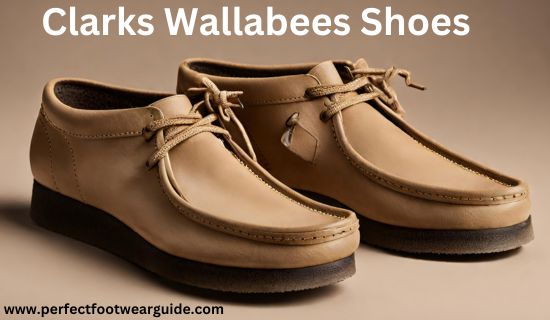
Origin Story: Introduced in the 1960s, the Wallabee emerged alongside the upward push of countercultures and embraced a more informal aesthetic.
Design and Features: This moccasin-fashion shoe has a distinctive sew element throughout the vamp and is a broader, extra comfortable match than the Desert Boot. The Wallabee is generally constructed from suede or leather-based and sits on a crepe sole, supplying similar comfort and versatility.
Cultural Impact: The Wallabee resonated with the unfastened-lively people of the 1960s and 1970s. It continues to be a famous desire for the ones seeking a snug, stylish shoe with a rebellious charm.
3. Clarks Originals:
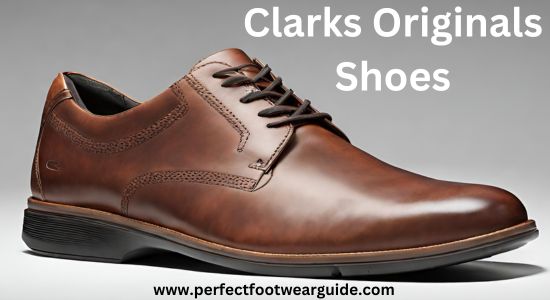
Concept: Launched in 2001, Clarks Originals is a sub-logo that celebrates the emblem’s history by reinterpreting classic styles with a cutting-edge twist.
Design and Features: Clarks Originals takes inspiration from iconic designs like the Desert Boot and Wallabee; however, it adds current elements like ambitious colorations, updated materials, and progressive features. This sub-logo permits Clarks to cater to a more youthful target audience, even staying authentic to its roots.
Impact: Clarks Originals has effectively delivered conventional styles to new technology, ensuring their relevance in the ever-evolving fashion panorama.
4. The Clarks Trigenic:
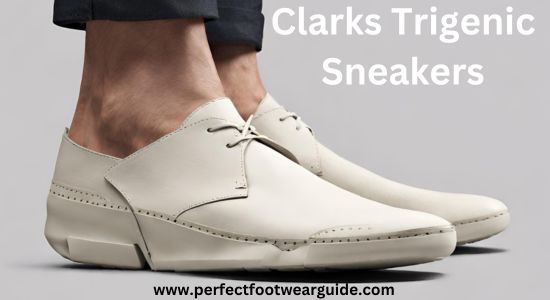
Innovation: Launched in 2015, the Trigenic represents Clarks’ commitment to non-stop innovation in comfort technology.
Design and Features: This shoe contains an innovative tri-density sole that combines cushioning, aid, and flexibility. This precise creation offers high-quality comfort and support at some stage in the day.
Impact: The Trigenic showcases Clarks’ ability to blend heritage with innovation, offering a modern take on comfort while maintaining the brand’s core values.
These iconic Clarks styles represent a glimpse into the emblem’s various and enduring legacy. Each shoe’s unique story resonates with people across generations, solidifying Clarks’ function as a pacesetter in the footwear industry.
How to Identify Where Your Clarks Shoes Were Made?
You can usually find the country of origin on the shoe’s label or packaging. Look for a label mentioning “Made in” followed by the specific country name.
Who Owns Clarks Shoes?
Unlike many other major shoe manufacturers, Clarks remains a private company, meaning it is not publicly traded on the stock market. The Clark family, descendants of founders Cyrus and James Clark, owns and controls it. This particular ownership structure allows the agency to operate with an extended period perspective, specializing in emblem heritage and sustainable practices instead of fully maximizing short-term profits for shareholders.
Why Manufacturing Overseas Makes Sense for Clarks
Clark’s decision to manufacture overseas can be attributed to several factors, including:
- Cost-effectiveness: Production costs in certain countries can be lower, allowing Clarks to offer competitive prices to a broader market.
- Access to skilled labor: Certain regions may have a strong workforce with expertise in specific shoemaking techniques.
- Proximity to raw materials: Locating factories closer to explicit materials can streamline production.
The Future of Shoe Manufacturing at Clarks
While Clarks has reintroduced UK manufacturing, its global network likely remains a core part of its strategy. They will likely continue exploring innovative production methods and materials while maintaining their commitment to responsible sourcing and ethical practices.
Final Thought
Clark’s manufacturing landscape reflects a blend of tradition and adaptation. While their historic origins lie in the UK, they have embraced a globalized approach to cater to a wider audience. This guide provides a comprehensive overview of where are Clarks shoes made. Offering valuable insights for informed consumer choices.
FAQs: Where Are Clark Shoes Made?
When did Clarks stop making shoes in England?
Clark’s last major production facility in England closed in 2006. However, they reintroduced limited manufacturing in 2017, focusing on the Desert Boot.
Are Clark sandals made in China?
While China has been a past production location for Clarks, it’s only possible to definitively state whether their sandals are currently made there after checking the specific product information.
What is so special about Clarks shoes?
Clark shoes are renowned for their focus on comfort, durability, and timeless designs. They cater to various foot types and offer a blend of style and functionality.
Where does Clark leather come from?
Clarks source leather from various countries around the world.
Which country made Clarks?
Clarks was founded in the United Kingdom, specifically in Somerset, England, in 1825.
Are Clarks Shoes Made In The USA?
Currently, Clark does not have any manufacturing facilities in the United States.
Where Are Clarks Wallabees Made?
As with most Clarks models, the specific production location for Wallabees can vary depending on various factors. However, they are currently primarily manufactured in Vietnam.
